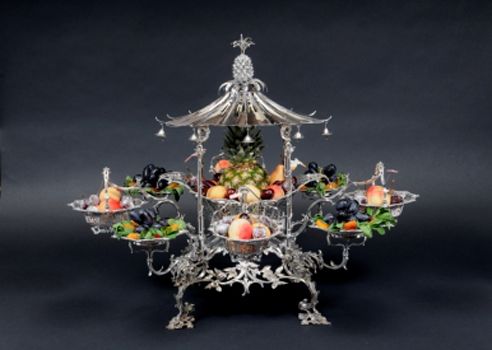Reading time: Less than 1 minute
Increase your vocabulary and you’ll make your writing much more precise. That’s why I provide a word of the week. Today’s word: epergene…
I view myself as a serious cook and entertainer, but I had never come across the word epergne until I read Patricia Volk’s memoir: Stuffed: Adventures of a Restaurant Family. Here’s how Volk used it.
At home, I shoved the epergne in a closet and tried to forget about it.
No clues in a sentence like that! I ran to my dictionary and learned that an epergene (pronounced: āˈpərn/) is an ornamental centerpiece for a dining table, typically used for holding fruit or flowers. See photo, above.
The word, which dates to the early 18th century, has French roots and is thought to be an altered form of the French épargne meaning ‘saving, economy.’ Three hundred years ago, the English had adopted the French custom of putting a large container on the table to hold condiments, and then, at the end of the meal, exchanging it for another container holding fruit. Both items were designed to take as little space as possible on the table and therefore made use of tiers of dispensers.
Eventually, these containers, epergenes, became more and more elaborate and gave rich owners the chance to show off their wealth and taste. The “economy” was not related to the container itself — which was frequently made of sterling silver. The saving related to space — an epergne didn’t take up much room — and spared effort on the part of the servants, who no longer had to serve every single item. It also saved wastage – unused items could be left in the centrepiece for use on another occasion.

